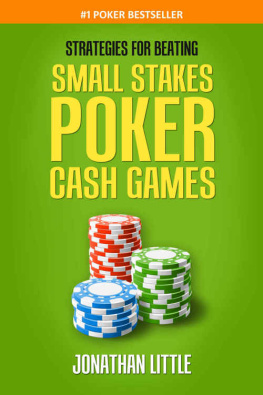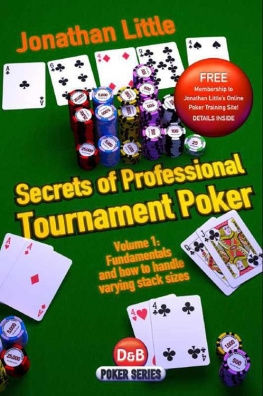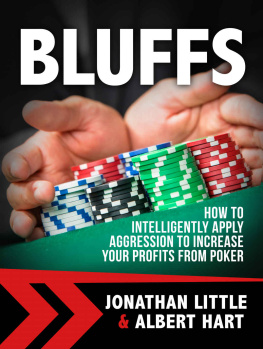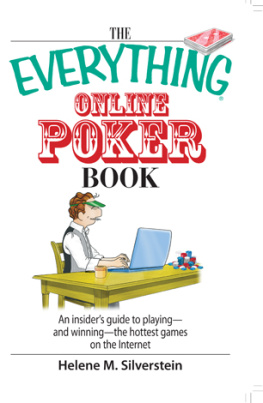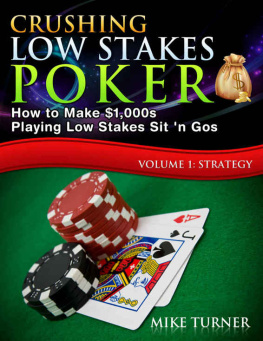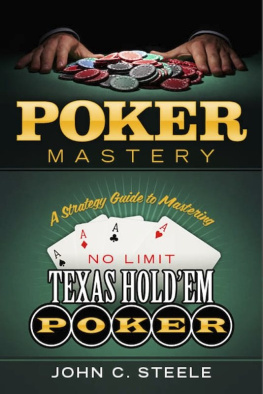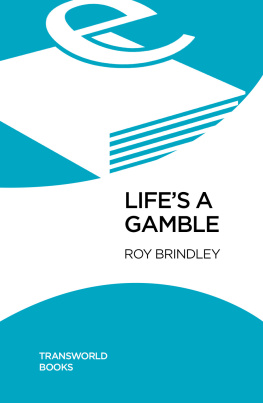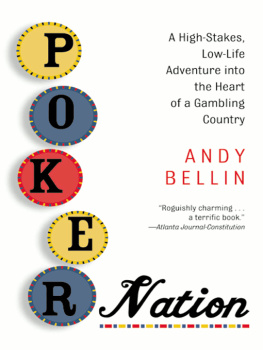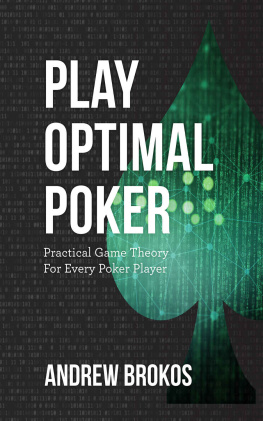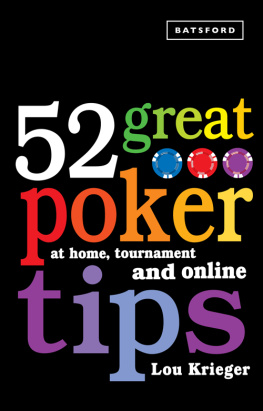I created a short quiz as a companion to this book. Use this quiz to quickly test your knowledge about small stakes no-limit hold'em cash games.
It's only 10 questions long, and each question relates to a specific concept I discuss in this book. After you answer each question, I will give you a short analysis of the concept being covered.
If you get a question wrong, the quiz will direct you to the appropriate section in this book to learn more about that topic.
To get the most out of this quiz, I suggest you take it before you read this book to help you identify the cash game concepts you need to work on. Take it again after you have finished reading this book to make sure you have mastered every concept. Finally, keep taking this quiz until you get a perfect score.
First and foremost, thank you to my wonderful wife, Amie, for always loving and supporting me. She inspires me to do my best every single day. Infinite thanks are also due to my business partner, Dan Stanley. He works hard to ensure our business runs smoothly. This book would not have been possible without the help of many of my students. On JonathanLittlePoker.com , they submitted numerous excellent questions that helped make this book as thorough as it is. I also asked some of my students to proofread this book. Thanks entirely to them, this is the cleanest book I have ever written. The proofreaders for this book are:
Introduction
You may be wondering what a two time World Poker Tour champion can teach you about small stakes cash games. Some people assume I dont even play cash games. In fact, about half of my poker play is in the cash game format, although it is primarily at $10/$20 no-limit and higher. I even have two best-selling books, Jonathan Little on Live No-Limit Cash Games, Volumes 1 and 2 , which extensively discuss my strategies for beating tough cash games.
That being said, I realize that high stakes games are drastically different from small stakes games. So, in preparation for this book, I spent a decent amount of time playing $1/$2 no-limit in local casinos, primarily at Borgata in Atlantic City, New Jersey. While I was perplexed by some of my opponents plays at first, I developed a solid strategy that was effective against my opponents. In this book, I will share with you the strategies that enabled me to win at the rate of $35 per hour at $1/$2 no-limit. Throughout this book I will use as examples many of the actual hands I played in order to demonstrate key concepts you must master if you want to succeed.
Small stakes cash games are an extremely profitable form of poker because the average player is quite weak. As long as you maintain a bankroll of at least 2,500 big blinds, you will rarely go broke, assuming you are a good player. This means that if you learn to play well, you can quickly progress up through the ranks to the middle stakes games where you can win more money.
Please note this book is not for total beginners who have no poker experience at all, nor is it meant to be an exhaustive guide on how to beat cash games. Instead, the purpose of this book is to teach you to play at a skill level that will get you to the middle stakes as fast as possible, allowing you to realize your dream of making significant money from poker. Once you get to that level, I strongly suggest you check out my other books, Jonathan Little on Live No-Limit Cash Games, Volumes 1 and 2 , which present my complete strategy for beating middle and high stakes games.
In order to bring your skills up to the level of being proficient enough to crush the small stakes games, you may have to forget a lot of what you have previously been taught about poker. Bookstores (particularly online) are filled with books by people touting a system they claim will teach you to win at poker. These books often suggest playing an overly tight strategy where you only put money in the pot when you are confident you have the best hand. I hate to be the bearer of bad news, but if you want to get good at poker, you must learn to play a technically sound strategy while being able to get out of line in order to take advantage of your opponents errors. If you are only capable of thinking inside the box, expect to stay boxed in at the small stakes forever.
As a quick example, suppose someone raises from middle position and you have A-J on the button. (Throughout this book, if suits are not listed, assume the hand is offsuit. Suited hands will either have an s after them or the corresponding suit symbols.) Against overly tight players, you should fold because they are only raising with hands that dominate yours. Against reasonably active players, calling is probably best because if you reraise and get much action, you will usually be in bad shape. Against wild players, you can reraise for value because they will call your reraise with numerous worse hands that you crush. As you can see, following a simple preflop chart that says always reraise with A-J will get you in a ton of trouble. In order to succeed at cash games, you must adjust your strategy based on how your opponents play, which means you must pay attention to your opponents. The first section of this book will teach you to do exactly that.
The second section deals with how to play a fundamentally sound preflop strategy. The most common spot where amateur players make huge mistakes is when the action folds to them. Since these mistakes occur almost every hand, they become quite costly in the long run, even if each individual error is not too significant. Most small stakes players routinely limp when they should raise or fold, costing themselves huge amounts of equity. After discussing what you should do when the action folds to you, we will discuss what to do when someone raises before the action gets to you. After that, we will discuss what to do when your opponents limp before the action gets to you. Finally, we will review how to apply aggression and how to deal with aggression from your opponents. Sometimes you should fight fire with fire and other times you should quickly get out of the way, even with strong hands.
The third section covers how to play after the flop. Most small stakes poker books suggest you play a simple postflop strategy, such as raise with draws and top pair and better hands, call with middle pair and bottom pair, and fold everything else. I will be the first to tell you that if you follow a simple, formulaic strategy, you will fail. Fortunately for you, almost all small stakes players commit this egregious error. I will show you how to get well out of line in order to take full advantage of your opponents mistakes, allowing you to fold strong hands when you are crushed and steal the pot when it is clear your opponents have nothing.

